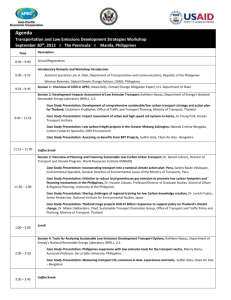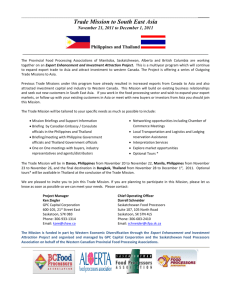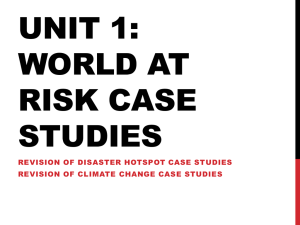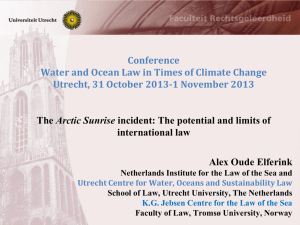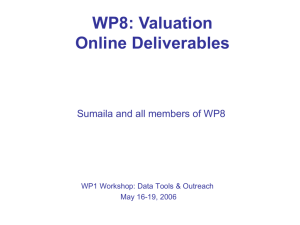开放英语4
advertisement
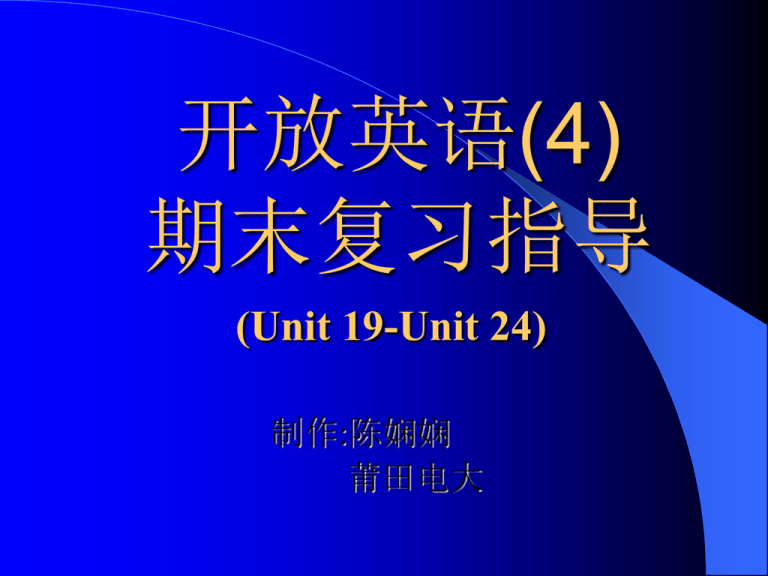
开放英语(4) 期末复习指导 (Unit 19-Unit 24) 制作:陈娴娴 莆田电大 分词用作定语或结果状语; 比较结构the…the…和 the+最高 级+现在完成时+ever结构; 现在完成时、现在完成进行时、 将来进行时和将来完成时; 不定式的完成式和进行式; 分词用作定语或结果状语 现在分词做定语,它与被 修饰词之间的关系是主 动的. There are now 11 cities housing over 11 million people each. There are now 11 cities (which are) housing over 11 million. 过去分词用作定语, 有被动的意义. He bought a computer produced in Shanghai. He bought a computer (which was) produced in Shanghai. 过去分词用作定语.如果是一个单词,经常 放在所修饰的名词之前,相当于形容词,有 被动意义. 过去分词短语用作定语时,一般放在所修 饰名词之后,相当于一个被动形式的定语 从句.现在分词除用作定语外,还可用作状 语. The more…the more…的用法 该结构的形式为 “the+比较级,the+比较级”, 表示 “越……,就越……”. 例如: The smaller the families, the higher the standard of living. 家庭越小,生活水平就越高. How much shall I cook? The more, the better. 我该做多少饭呢? 越多越好. 在使用这个结构时注意不要忘记要 在比较级前面加上定贯词the. 注意 The+最高级+现在完成时+ever结构 这个结构常用来谈论重要的事件或经历, 表示 “迄今为止已经完成或经历过的 最……的事情”. Eg: It is the best film I’ve ever seen. 这是我看过的最好的电影. It is one of the best concerts I’ve ever been to. 这是我去过的最好的音乐会之一. Back 现在完成时和现在完成进行时 :现在完成时表示说话时动作已经完 成;现在完成进行时表示说话时动作仍 在继续进行。 We have bought a new house. (已经完成的动 区别 作,我们现在有新房子了。) It has been raining for three hours. (雨还在 下,动作还在继续进行) 将来进行时由“ will (’ll)/ will not (won’t)+ be+现在分词 ”构成,强调在将来某一特 定时间正在进行或要发生的动作。 Next month, the Arctic Sunrise will be visiting the Philippines and Thailand. 下个月,北极日出号将正在访问菲律宾和 泰国。 否定句: Next month, the Arctic Sunrise won’t be visiting the Philippines and Thailand. 疑问形式: Will the Arctic Sunrise be visiting the Philippines and Thailand next month? Yes, it will./ No, it won’t. 将来完成时表示在将来某个时间以前发生的事情。将来完成 时是由“will/won’t + have + 过去分词”构成。 By 2003, the number of native English-speaking web users will have dropped to 29%. 到2003年,以英语为母语的网络使用者的人数将下降到29%。 不定式的完成式和进行式 它们常与引述动词的被动形式连用. 它们的结构分别是: To + have 过去分词 (不定式完成式) To + be + 现在分词 (不定式进行式) 不定式的一般式即动词原形表示陈述一 个事实,而完成式强调动作在陈述之前已 经发生,进行式强调动作正在进行. A sperm whale is said to have dived to 2000 meters. 据说一头抹香鲸潜到了2000米. He is said to be working in Beijing. 据说他现在正在北京工作. Thank you for your attention!

